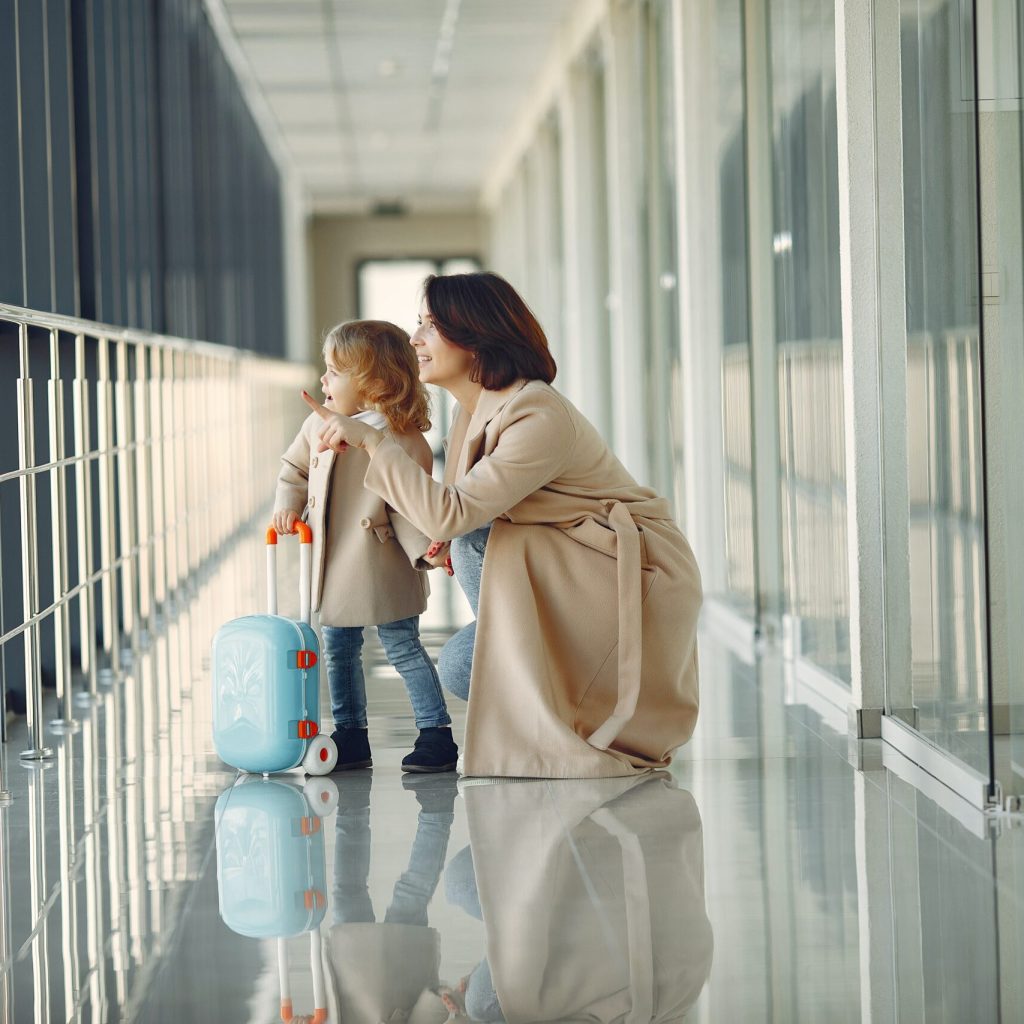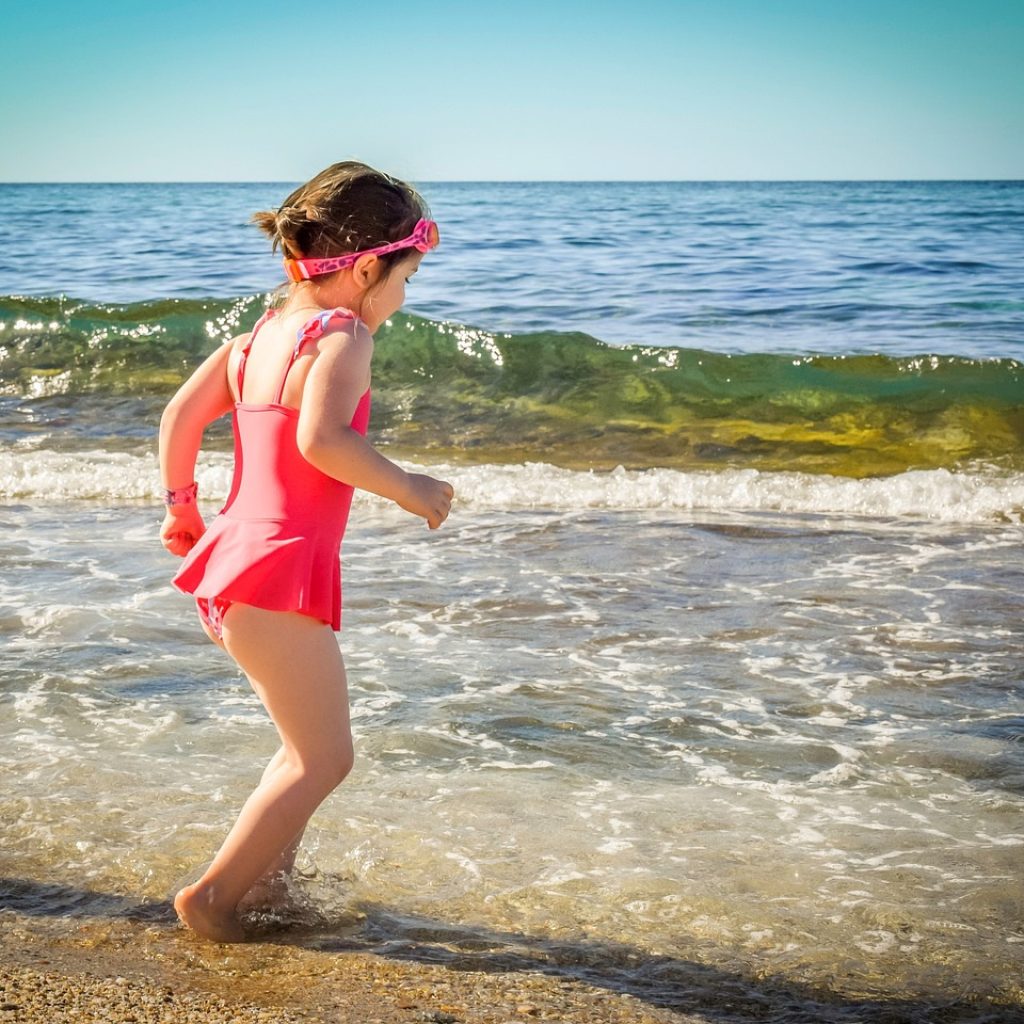



Consider the last time you packed up the car for a family road trip, only to realize you forgot the first-aid kit. As summer approaches, ensuring your family’s safety during summer travel becomes paramount, with various factors to keep in mind. From proper car seat installation to water safety rules, each detail plays a critical role in a trouble-free vacation.
So, what should you prioritize to stay prepared and make the most of your time away? The answer might surprise you.
Key Takeaways
- Ensure proper installation of car seats to maximize safety; regularly check for compliance with age and size guidelines.
- Pack a first-aid kit, healthy snacks, and hydration to manage energy and health during travel.
- Familiarize children with airport protocols and in-flight behavior to reduce anxiety and ensure safety.
- Designate a ‘Water Watcher’ for swimming activities to prevent accidents and ensure constant supervision.
- Create a kid-free zone around grilling areas and use long-handled tools to prevent burns and injuries.
Essential Packing Checklist
When planning for summer travel, it’s essential to consistently pack an important checklist to guarantee a smooth and enjoyable experience for your family.
Start with a first-aid kit containing waterproof plasters, bandages, and antiseptic ointments for minor injuries.
Don’t forget to include healthy snacks and plenty of fresh drinking water to keep your kids energized and hydrated.
Comfort items like travel pillows and blankets can help them feel secure during long journeys.
Prepare for unexpected delays by packing books, games, and drawing supplies to entertain your children.
Finally, verify that any necessary medications are easily accessible, along with a list of emergency contacts.
Road Travel Safety Tips
Ensuring your child’s safety on the road starts with properly installing their car seat, as studies show that about 73% are incorrectly used or installed. Correctly used child safety seats can reduce the risk of death by up to 71%. Always follow the age and size guidelines for car seats and booster seats.
| Age Group | Recommended Safety Seat |
|---|---|
| Birth to 2 | Rear-Facing Car Seat |
| 2 to 4 | Forward-Facing Car Seat |
| 4 to 8 | Booster Seat |
| 8 to 12 | Seat Belt (Back Seat) |
Air Travel Safety Guidelines
While road travel safety is essential, air travel also requires careful planning to guarantee your child’s safety and comfort throughout the flight.
Following air travel safety guidelines is vital. Consider bringing a car seat that’s certified for aircraft use, making sure it’s properly secured during the flight. This provides the safest option for your child.
Create a travel plan that includes snacks and hydration to maintain their comfort and well-being.
Additionally, prepare for potential delays by packing engaging activities like books and games to keep your child entertained.
Safety Measures Away From Home
When you’re away from home, discussing safety protocols with relatives is essential to prevent accidents in unfamiliar environments.
Always supervise your children around water, as drowning poses a significant risk.
Discussing Safety Protocols
Establishing clear safety protocols with family members before traveling can help everyone stay aligned on child safety expectations and minimize risks. Discussing these measures guarantees that parents and children are prepared for potential hazards.
| Safety Measure | Description | Responsible Party |
|---|---|---|
| Discuss safety rules | Talk about potential dangers while traveling. | All family members |
| Keep hazards out of reach | Store small objects and medications safely. | Parents |
| Open communication | Encourage children to ask questions about safety. | Parents and children |
| Designate a ‘Water Watcher’ | Assign an adult to supervise near water. | Designated adult |
| Regular check-ins | Keep in touch during outings to guarantee safety. | All family members |
Supervision Around Water
Supervision around water is an essential safety measure that requires constant attention, as drowning remains a leading cause of accidental death in children.
Always designate a responsible adult to act as a ‘Water Watcher,’ ensuring they maintain a vigilant eye on kids swimming or playing near water.
Remember, swimming aids like water wings or noodles aren’t substitutes for U.S. Coast Guard-approved life jackets.
Teach your children to swim only when an adult is present, and remind experienced swimmers to have a buddy.
Discuss potential hazards associated with open water, such as uneven surfaces and strong currents, to enhance their awareness.
Prioritizing water safety can notably reduce risks and help create a safer, more enjoyable summer experience for everyone.
Child Safety Seat Best Practices
When it comes to child safety seats, proper installation is essential to guarantee maximum protection.
You should also use age-appropriate seats and regularly check that they’re suitable for your child’s height and weight.
Keeping these best practices in mind can considerably enhance your child’s safety during summer travel.
Proper Installation Guidelines
Properly installing a child safety seat is essential for guaranteeing your child’s safety during travel, so always choose a seat that fits their weight and height. Remember, the back seat is the safest spot for child passengers under 13 years old. Always consult both the vehicle owner’s manual and the car seat instructions for proper installation, guaranteeing a secure fit without slack in the harness.
Regularly check your installation; studies show about 73% of car seats are improperly used. Finally, replace car seats after any collision or if your child outgrows their current one to minimize the risk of death.
| Installation Step | Key Point |
|---|---|
| Choose the right car seat | Guarantee it fits your child’s size |
| Install in the back seat | This location is statistically safest |
| Regularly check installation | Protect against improper usage |
Age-Appropriate Seat Usage
Ensuring your child’s safety during travel involves understanding the age-appropriate use of car seats, which is essential for their protection on the road.
Follow these key guidelines:
- Keep your child in a rear-facing car seat until they’re at least 2 years old for maximum protection.
- Shift to a forward-facing seat when they exceed the limits of their rear-facing seat, generally around 4 years old, ensuring they’re securely harnessed.
- Use booster seats until your child is between 8 and 12 years old, ensuring the seat belt fits properly.
Regular Safety Checks
Regularly checking your child’s car seat is vital, as studies show that nearly three-quarters of car seats are misused or improperly installed.
To guarantee your child’s safety during summer travel, verify that their child safety seat is appropriate for their height and weight. Keep children in rear-facing seats until at least 2 years old, and routinely check to verify they haven’t outgrown their current seat.
Once they outgrow forward-facing harness seats, shifting to booster seats is important, typically until they’re between 8 and 12 years old.
Make it a habit to review safety guidelines frequently to stay informed about the latest recommendations, guaranteeing peak protection for your child on every journey. Your diligence can save lives.
Swimming Safety Precautions
While enjoying the water, it’s crucial to keep a close watch on your children, as constant supervision is the best way to prevent accidents and guarantee their safety.
Here are some key swimming safety precautions to follow:
- Designate a responsible adult as a Water Watcher, ensuring they keep their eyes on the children at all times.
- Teach your kids basic water safety rules, including how to float and signal for help.
- Always use U.S. Coast Guard-approved personal flotation devices (PFDs) instead of inflatable swimming aids.
Grilling and Outdoor Safety Tips
After a fun day by the pool, you may want to fire up the grill for a family meal, but it’s important to prioritize safety to prevent accidents in your outdoor cooking area. Here are key tips to guarantee a safe grilling experience:
| Safety Tips | Description |
|---|---|
| Kid-Free Zone | Establish a three-foot zone around the grill. |
| Proper Storage | Keep matches and lighters out of kids’ reach. |
| Constant Supervision | Never leave the grill unattended; monitor kids nearby. |
Always position grills away from foot traffic and overhanging branches. Supervision is critical when grilling; this helps avoid unexpected fires or injuries. With these safety measures in place, you can enjoy outdoor cooking while keeping your family safe.
General Summer Travel Awareness
As you commence summer travels, prioritizing safety in and around your vehicle is crucial for a smooth journey. To keep your children safe, follow these important steps:
- Check to confirm safety seats are correctly installed. Remember, about 73% are misused, which considerably increases risks.
- Always make sure everyone is buckling up on every ride. This simple act can reduce the risk of death by 71% for children in safety seats.
- Never leave children alone in cars, as heatstroke can be deadly.
Planning regular rest stops is also essential during long trips—this helps maintain alertness for all drivers.
Conclusion
As you commence your summer adventures, remember that prioritizing safety can make the difference between a fun trip and a vacation gone awry.
By following these guidelines, you’ll set the stage for a stress-free experience that feels as effortless as a breeze on a hot day.
From packing essentials to supervising outdoor activities, staying informed is key.
So gear up, stay alert, and enjoy making unforgettable memories with your family this summer!









